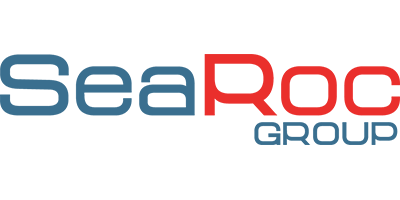Reducing risks and costs in offshore renewable energy
The marine management consultancy SeaRoc Group analyses seabed movements and monitors the condition of underwater cables using Esri’s ArcGIS platform. With this insight, it can help wind farm operators to reduce the risk of cable failures, minimise maintenance costs and prevent interruptions in the supply of renewable energy to the National Grid.
Reduced risk of cable damage and interruptions to the supply of renewable energy
Cost savings from proactive rather than reactive maintenance planning
Clear visualisations of priority issues, to improve decision making
The Challenge
In the offshore renewable energy industry, cables and other assets worth millions of pounds are buried in sandy seabeds, hundreds of metres beneath the surface of the sea. If movements occur in the seabed over time, these cables and assets can become exposed and then damaged by the movement of the tides. Electricity circuits can be broken, leading to a suspension in energy transfer to the National Grid, complex and costly repair jobs and significant financial losses for renewable energy producers.
As a specialist marine management consultancy, SeaRoc Group (SeaRoc) provides a wide range of services and systems for clients in the offshore renewable energy market. It identified an opportunity to use geographic information system (GIS) technology to help its clients monitor seabed movements more effectively and gain better information about potential risks to improve their operational planning.
By using ArcGIS to analyse changes in a dynamically evolving environment, we are helping our clients to sustain the generation of electricity from renewable energy sources, for the future
Amanda Forbes – Senior GIS Analyst – SeaRoc Group
The Solution
SeaRoc has been using solutions from Esri’s ArcGIS platform since its inception in 2002 and used Esri’s ArcGIS Desktop and Spatial Analyst Extension to develop its new client service.
The company commissions regular bathymetric surveys of the seabed, conducted from boats, and inputs the resulting data into ArcGIS Desktop in high resolution. SeaRoc then converts this data into image files and uses Esri’s Spatial Analyst Extension to compare it with previous biometric surveys. Through this spatial analysis, the company can identify areas where seabed changes have occurred and pinpoint sections of cable and assets that have become exposed. As Amanda Forbes, Senior GIS Analyst at SeaRoc, says, “ArcGIS enables us to see things underwater that are extraordinarily difficult to see otherwise.”
Subsequently, SeaRoc uses ArcGIS Desktop and the Spatial Analyst Extension to calculate possible future changes to the condition of cables and assets, based on predictions of how the seabed will change. The company shares this seabed analysis with its clients in the offshore renewable energy industry, by giving them access to an ArcGIS web portal. It also uses ArcGIS to create colour-coded maps to incorporate into reports and presentations, providing a strong visual picture of the condition of buried assets.
ArcGIS enables us to see things underwater that are extraordinarily difficult to see otherwise
Amanda Forbes – Senior GIS Analyst, SeaRoc Group
The Benefits
Reduced risk of cable damage
Through the use of ArcGIS, SeaRoc is able to provide its clients with accurate information about precisely where the seabed is shifting and how these movements impact buried cables and assets. Offshore wind farm operators can then use this insight to quickly instigate the necessary measures to protect their assets and reduce the risk of cable damage. “When you know what the seabed is doing, you can prevent issues from arising that could have serious financial consequences,” Forbes says.
Lower operational costs
Using the ArcGIS analysis from SeaRoc, offshore wind farm operators can reduce their maintenance costs, by planning their maintenance activities more proactively, according to the relative vulnerability of each location or asset. ArcGIS clearly visualises the likely seabed changes over one, three and five years, enabling organisations to develop better informed, long-term asset management plans, reduce the need for expensive reactive repairs and improve their operational efficiency.
Improved clarity in reports and data sharing
SeaRoc is able to make the findings of its seabed analysis simple to understand, by using ArcGIS to create a range of colour-coded maps in hard copy and interactive, online formats. “ArcGIS works really well as a visualisation tool,” observes Forbes. “Areas of critical concern are shown in red on the maps, making it really clear where intervention is needed urgently to protect underwater assets.”
A reliable supply of sustainable electricity
Finally, SeaRoc’s new ArcGIS-based service will help to ensure that offshore wind farms continue to generate the optimum quantity of sustainable electricity, by reducing the likelihood of outages due to cable damage from seabed movements. This is a particularly important benefit given that the UK is facing a potential energy supply shortage in the future and needs to increase its generation of renewable energy. “By using ArcGIS to analyse changes in a dynamically evolving environment, we are helping our clients to sustain the generation of electricity from renewable energy sources, for the future,” Forbes concludes.


